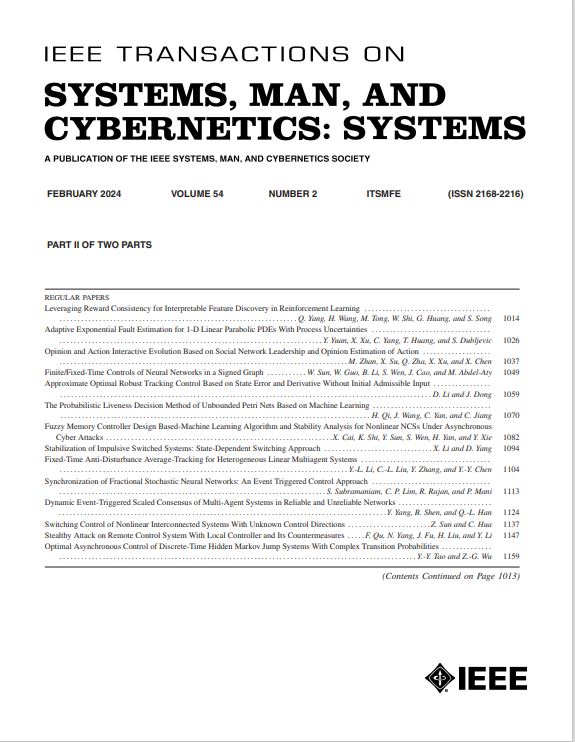DIG: Improved DINO for Graffiti Detection
IF 8.6
1区 计算机科学
Q1 AUTOMATION & CONTROL SYSTEMS
IEEE Transactions on Systems Man Cybernetics-Systems
Pub Date : 2025-03-04
DOI:10.1109/TSMC.2025.3541795
引用次数: 0
Abstract
Graffiti detection is essential in historic building protection and urban neighborhood management. Graffiti detection has made significant progress in recent years based on the development of deep learning. However, small-scale graffiti, interference from the background, and the false detection of word parts in graffiti make it a challenging problem. This article proposes a Transformer-based high-precision graffiti detection method, namely DIG. Precisely, it consists of three modules: 1) Spatial query selection (SQS), scale-aware IoU loss (SIL); 2) Denoising Task with binary contrastive denoising (BCDN); and 3) IoU-guided box denoising (IBD) modules. To detect small-scale graffiti, this paper proposes SIL to help the loss function to perceive small-scale graffiti and large-scale graffiti fairly. To reduce the false detection of word parts, this article presents the SQS module, which integrates spatial information into the query selection process of the Encoder to filter out falsely detected bounding boxes within the graffiti. To reduce the interference from the background, this article introduces a denoising task with BCDN and IBD modules, improving the model’s ability to distinguish graffiti from the background and accurately select appropriate bounding boxes. A large number of experimental results on the STORM dataset show that our method achieves state-of-the-art results with an求助全文
约1分钟内获得全文
求助全文
来源期刊

IEEE Transactions on Systems Man Cybernetics-Systems
AUTOMATION & CONTROL SYSTEMS-COMPUTER SCIENCE, CYBERNETICS
CiteScore
18.50
自引率
11.50%
发文量
812
审稿时长
6 months
期刊介绍:
The IEEE Transactions on Systems, Man, and Cybernetics: Systems encompasses the fields of systems engineering, covering issue formulation, analysis, and modeling throughout the systems engineering lifecycle phases. It addresses decision-making, issue interpretation, systems management, processes, and various methods such as optimization, modeling, and simulation in the development and deployment of large systems.
 求助内容:
求助内容: 应助结果提醒方式:
应助结果提醒方式:


